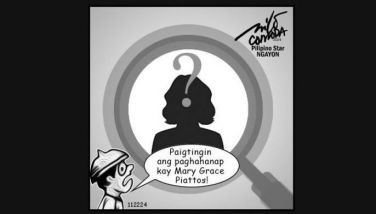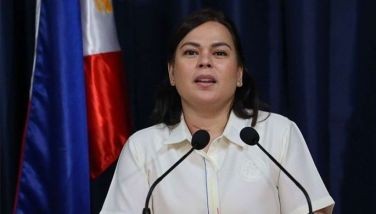EDITORIAL – Will anything come out of the lifestyle checks?
January 10, 2003 | 12:00am
 When President Arroyo ordered lifestyle checks conducted on all public officials in Cabinet-level or appointive positions, many people were skeptical. The mechanics of conducting the lifestyle checks was tricky enough. The agency tasked to carry out Mrs. Arroyo’s order was the Pre-sidential Anti-Graft Commission. The task entrusted to the PAGC, with its staff of 50 and an annual budget of P18 million, would daunt a bigger office such as that of the Ombudsman. Since the PAGC was created by the President, would it go against public officials known to be close to the Chief Executive if their lifestyles are found to be suspect?
When President Arroyo ordered lifestyle checks conducted on all public officials in Cabinet-level or appointive positions, many people were skeptical. The mechanics of conducting the lifestyle checks was tricky enough. The agency tasked to carry out Mrs. Arroyo’s order was the Pre-sidential Anti-Graft Commission. The task entrusted to the PAGC, with its staff of 50 and an annual budget of P18 million, would daunt a bigger office such as that of the Ombudsman. Since the PAGC was created by the President, would it go against public officials known to be close to the Chief Executive if their lifestyles are found to be suspect?
Now the doubts are being borne out. Two months after the President issued her order, the PAGC is buried in paperwork. Reports said the PAGC has so far asked over 5,000 presidential appointees to submit their statements of assets and liabi-lities for the past three years. More officials will be asked to submit their SALs. These documents, when submitted by lawmakers, are a source of comic relief in the legislature. With the right accountant the richest member of Congress can emerge as the poorest. Market va-lue is rarely used in such documents. Ownership of assets can be distri-buted to family members. Most public officials know enough about SALs to make these documents nothing but works of fiction.
The PAGC is supposed to compare the SALs with tax declarations and other indicators of wealth. No one is yet sure how the declarations will be checked for accuracy. Will someone visit the house of a public official to see if he is living within his means? What if the official is maintaining several families in different homes?
Some people expected the PAGC to focus first on ranking public officials in the executive branch, particularly those who have been implicated in corruption scandals. But the PAGC believes that for fairness, the lifestyle checks must not single out any particular official. Which is why PAGC personnel are now buried in a ton of documents. By the time the PAGC finishes its task, a new administration may be in place, ready to abolish the commission.
BrandSpace Articles
<
>
- Latest
- Trending
Trending
Latest
Latest
Recommended

November 21, 2024 - 12:00am




























